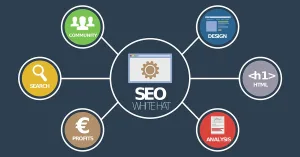Today the Rules of Thumb blog from MoneyThumb will examine how innovation has helped private lenders. Things have changed for the better for a new generation of private lenders and in this post, we will offer several reasons why.
Private lenders have historically tended to operate within a small local radius, and many were constrained by a lack of resources and funding relative to their traditional banking counterparts. Technology is changing all of that. Advances in technology are lifting many of the constraints that made it difficult to scale a successful lending business. Armed with new platforms, bigger networks, and better data, growth-oriented private lenders are transforming the industry.
Traditionally, many private lenders turned to a limited circle of investors as capital sources. Connections to capital were often correlated directly with a lender’s relationships to investors, which were often defined by personal or business ties. Friends, family members, business contacts, and, in many cases, the lender’s own personal wealth provided the funding for issuing loans to borrowers.
If the lender’s business grew faster than their network of capital sources, they generally had no choice but to slow things down or to seek financing from other sources. Establishing connections with hedge funds or large sovereign wealth funds required a significant investment of time and resources—hiring securities attorneys, drawing up operating agreements, and more. Seeking a line of credit from a bank was another option, but shorter track records or limited personal wealth made it difficult for some private lenders to qualify with banks’ stringent requirements.
Fortunately for the new generation of private lenders, technology has opened the floodgates to a more robust capital pipeline. Digital platforms and online marketplaces connect private lenders with the global capital markets, which offer access to a vast number of investors and capital sources—affording lenders more long-term funding and, most importantly, heightened liquidity.
Streamlining Operations and Boosting Efficiency
In private lending, advances in technology allow for a more systematic approach to loan origination. Where private lenders may have relied primarily on deal-making instincts honed over years of experience, technology is driving a shift to a more standardized model.
These “turnkey” originations allow private lenders to more quickly deliver documents to borrowers and close deals, helping drive increased deal volume. In today’s competitive lending marketplace, speed is a critical differentiator.
Experience and instinct remain valuable tools for private lenders, but technology allows them to standardize operations. Instead of approaching each loan origination as a “gut- feeling” deal, they can rely on a repeatable data-driven process that not only drives speed and growth but also facilitates specialization. Successful lender teams often have several in-house specialists, whether it’s the real estate expert, the marketing expert, the credit expert, or others. Having more scalable and institutionalized processes frees up mindshare for these experts to focus on doing what they do best—or allow teams that do not have such clear roles to focus on developing them. When originations happen smoothly and efficiently, team members can focus their time and energy on other activities like marketing, underwriting, and packaging loans.
Seizing the “Big Data” Opportunity
In addition to illuminating new sources of capital and streamlining the loan origination process, technology offers private lenders a wealth of valuable, actionable data and analytics. Strategic business owners in the industry are leveraging all the data they can capture to serve a variety of purposes, from more focused marketing efforts to better-informed property valuations.
For example, private lenders can use technology to explore targeted lending opportunities according to property type, size, geographic location, and other key attributes. When it comes to evaluating individual lending opportunities, publicly available records that are easily accessible online can be a valuable tool.
Lenders can approach a deal already armed with pertinent details such as the property’s title relationships, outstanding debt, knowledge of whether the property is distressed or in foreclosure, and more. In addition, there are several online valuation tools that use high-tech automation to determine property value and facilitate a faster lending commitment.
For the new generation of private lenders, these advances are only the beginning. As artificial intelligence evolves, it may introduce opportunities for massive efficiencies that today we cannot begin to fathom or calculate. For entrepreneurs who are just getting started, as well as seasoned lenders who are looking to scale their successful operations, there has arguably never been a more exciting time to be in the business of private lending.
Some data from this blog post are courtesy of the AAPL.





















Add comment